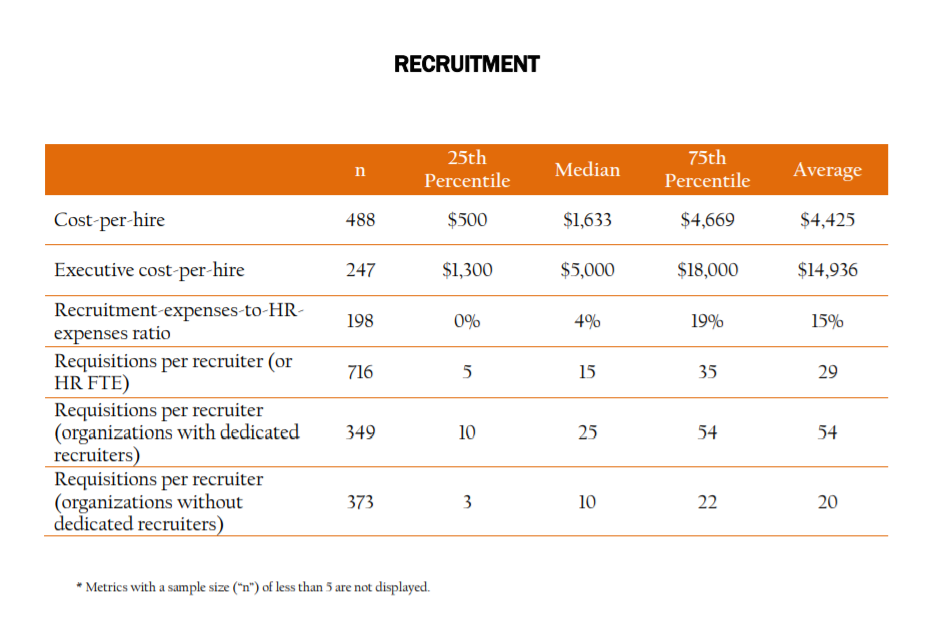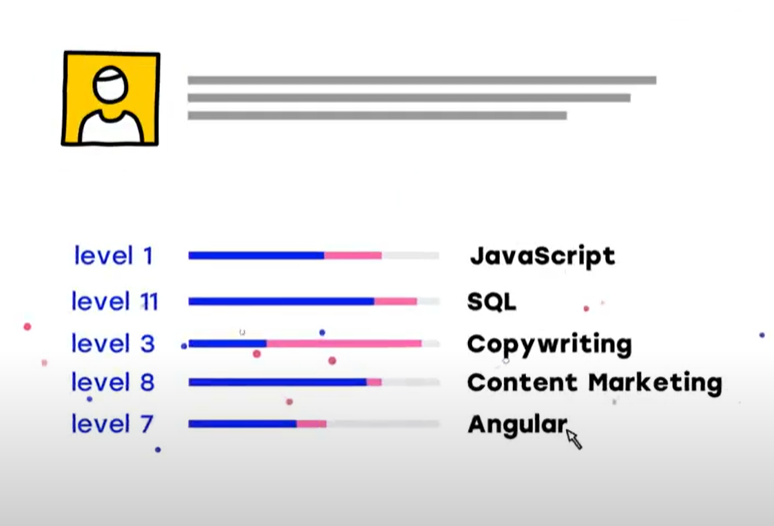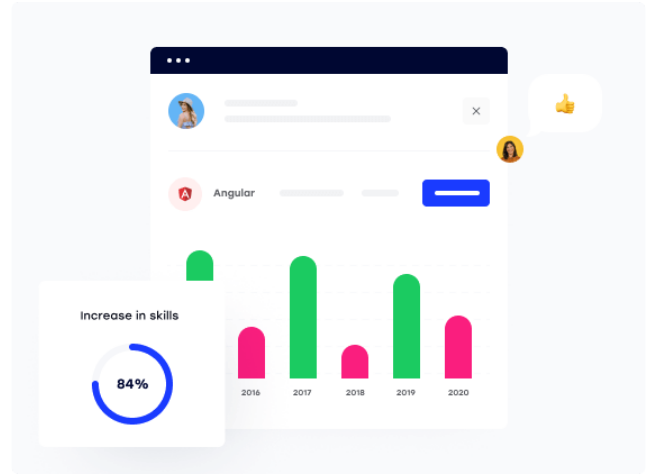Knowledge of the skills of the talents employed in your company is some of the greatest strengths for any enterprise. The strategic use of these resources often directly impacts whether the company will grow or fail.
Without a doubt, implementing strategic planning of HR activities contributes to maximizing the potential of the entire organization.
One of the first steps you should take in this direction is building a skills inventory.
Responsibility for skillful human resource management belongs to the competence of HR departments; Managers, specialists, and HR professionals use many different tools and strategies to properly manage the company’s most valuable asset, to actively support your business plans. Skills inventories are one of such tools.
Skill inventory in one sentence
The easiest way to describe it is as a compilation of information about the experience of the company’s entire workforce.
Due to the value that creating a skills inventory can bring to your business, it is worth looking at its definition, characteristics, and goals.
The following article will discuss what is characteristic about this tool and why you should consider implementing it in your strategic planning, and how you can do it.

What is a skills inventory?
A skills inventory contains information about an employee’s competencies and important skills. In practice, this inventory often also includes data on a given person’s education and work experience.
Track soft and hard skills
In other words, this living document is a database in which the skill set and the experience of people working in the organization is documented and tracked. With it, you can follow both employees’ technical and soft skills. This type of document is also an exceptional source of knowledge about the skills gap of the workforce.
What form do skill inventories take?
Skills inventories can be conducted in various forms and contain different information. The register can be an extensive, comprehensive list or simple table containing just the most critical skills. It is an individual issue related to the company’s capabilities and needs for this type of data.
Companies might choose to use something as simple as an excel spreadsheet with an overview of workforce skills or decide to use a software solution to obtain more advanced features like point in time view.
What organization are skill inventories most suited for?
To obtain benefits that skills inventories provide you often need to invest into developing proprietary software. For large corporations its a no-brainer, as that kind of organizations usually have massive budgets.
Are skill inventories any good for smaller entities?
In the case of small and medium enterprises, running a skills inventory in which specialists will analyze data on all current contributors may sound daunting but that’s where SaaS solutions can prove to be a more automated and affordable option. There is a variety of different human resources software available on the market.
Why is a skills inventory important?
A skills inventory offers several strategic benefits that can effectively help you achieve company goals.
From the entrepreneur’s point of view, a skills inventory is an excellent source of knowledge about the current list of key skills present in the organization, so you can make more informed decisions when allocating staff to a job. In addition, HR departments can use it to identify almost every skill gap of individual contributors, which helps in planning training.
Identify talent shortages to grow your business
Such as database also allows you to compare the current shortages in staff skills with what the organization needs to meet the present and future business objectives.
Identifying skills gaps
Skills inventories capture all current or potential skills gaps among the company’s staff that need to be completed to achieve the business goals. Ensuring that there are closed allows your organization to achieve more with your current employees. With the business attaining greater proficiency in the skills that remain in demand in your organization.
Recruitment planning
The discussed tool allows HR leaders to have a bird’s eye view of the company’s current resources and accurately determine the succession planning so that the hiring process results in acquiring more suited talents for the current workforce

Organization of dedicated training for employees
Identifying skills gaps, or seeing important missing skills among employees, allows HR professionals to identify certain skills that you can improve effectively through training.
Undoubtedly, knowing which best talents and skills are needed in an organization to implement its growth strategy successfully allows you to plan appropriate training that will raise employee skill levels.
Efficient recruitment
Noticing gaps in competencies and skills among employees enables a clear understanding of what talents in your organization need and what new employees need to work on in your company. Sometimes, if top talent leaves the company, you might need to hire several people who can fill the talent gap.
Develop instead of hiring
There is no doubt that even well-planned recruitment can be more expensive than educating and developing existing employees in your organization. According to the Association for Talent Development report, companies spend on average $1.252 per employee on training and development initiatives1. In turn, according to SHRM, the average cost of hiring a new person is $4.4252.

Employee retention
As we have already mentioned, employees are the greatest asset in any organization. Therefore, HR experts need to retain top talents. Workers want to develop their skills both at work and in private life. Thus, the company should provide them with appropriate training and development and, at the same time, take care to improve their working conditions.
Recognize the needs of your workforce
Skills inventories capture employee preferences and their current and future needs. There is no doubt that not all the employees’ duties will be interesting. But skills inventory helps you capture information about your employee’s work preferences will allow you to involve them in the right project as soon as they are available to improve their work experience.
What is included in the skill inventory?
Now that you know what an inventory of skills is and how it can grow your organization, it’s time to look at what should an inventory contain.
Adapt the form to your organization’s needs
You can create a skills inventory in any form that allows you to collect all the relevant information. The choice of data you will gather in this inventory is an individual matter and depends on how this valuable tool is to help your business. If you decide to build a skills inventory, consider collecting three data types.
Employee Technical Skills
That is a very general skill category where you can gather information about virtually all of your employees’ skills. For example, these may be skills related to the development of some computer programs or abilities in the field of accounting.

Soft skills
In this skills inventory category, it is worth gathering information about your employees’ leadership skills or communication skills that a given employee can use during a job.
Intrapersonal skills and abilities
These parts of the skills inventory provide you with direct information about your employees’ interests and emotions during the job. Thanks to this information, you can determine if a given person is the right talent for a given position and what level of productivity, resistance to stress, or resourcefulness this given person represents.
Find what motivates the employee
In addition, this type of information in the skills inventory will help you effectively determine the employee’s motivation sources, work preferences, or development paths that you can propose.
Ask employees for self-evaluation
A good solution is to allow people to self-assess their skills. It is a difficult task, but it shows a high degree of self-awareness of the employee. Perhaps thanks to this, you will discover new leadership skills among your workforce. Moreover, often, workers underestimate their skills and knowledge. So if you encourage employees to self-evaluate in a form you have prepared, you can increase their self-esteem.
Avoid missing important skills
It is good if employees can provide you with their self-assessment on uniform forms. Thanks to this, they will not overlook any of their skills information that could be useful to you.
Confront the information you receive with the insights of your leaders
Of course, such an assessment of yourself is not an impartial review, so it is worth supplementing your skills inventory with the opinion of your leadership and managers. Thanks to this approach, you will access the skills that employees confirm and potentially miss (essential skills in your company).
Find out what new skills your business needs
If you decide to create such an inventory, you will be able to identify any skills gaps and see what new skills your business needs to implement in order to drive development activities successfully. In addition, if you create a skills inventory, you will also learn what training your workers need to develop themselves in their job.
Use professional support to take care of employee interests
To develop skills inventories, many organizations use the support of HR specialists who can perform professional expertise and quickly identify employees whose development is worth investing in. They can also answer what key employees are necessary for your business development and whether you need to hire any new best talent for a leadership team.
How do you assess your skills?

Would you like to know your level of skills today? Or maybe you would like to find out how you can help your employees effectively develop their skills?
Create an inventory of skills!
Preparing a skills inventory will help you find the answers to these questions. In addition, implementing a skills inventory will also allow you to prevent the possible emergence of your business amid a crisis related to the lack of motivated workers.
Use the power of automation
We know that running skills inventory may discourage you due to its laboriousness. Fortunately, today, you can use the EmployPlan platform and create quick and fully automatic skill inventories yourself with our excellent tool.

Check it out for free
Register for free today and check how effective tool is the skills inventory!
- https://edume.com/blog/cost-of-training-a-new-employee
- https://www.shrm.org/ResourcesAndTools/business-solutions/Documents/Talent-Acquisition-Report-All-Industries-All-FTEs.pdf
